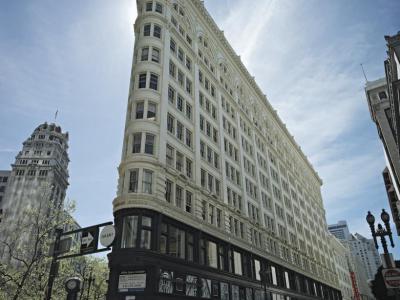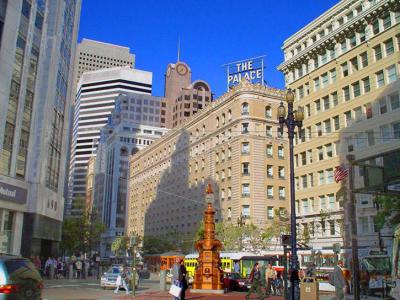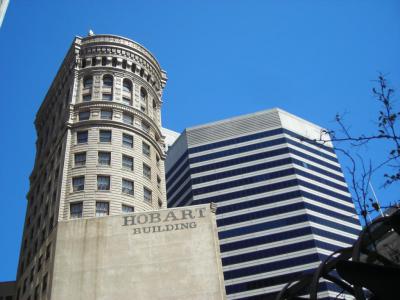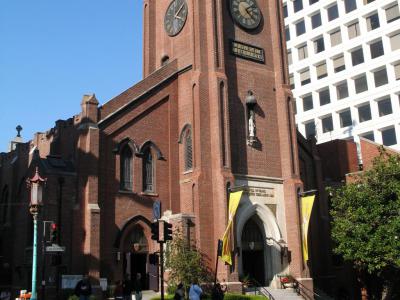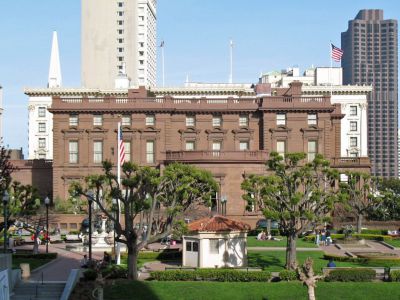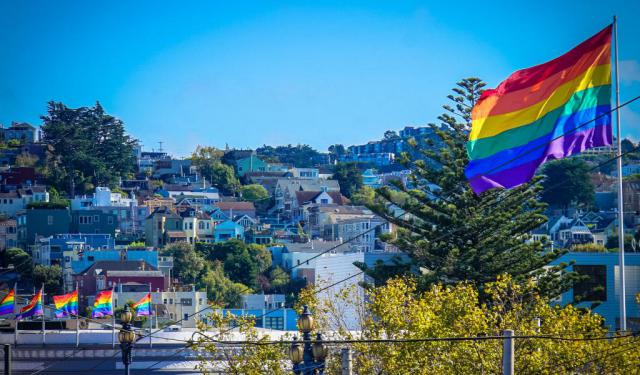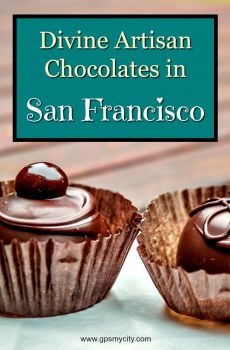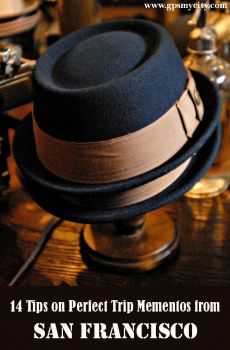
Famous Architecture Walking Tour (Self Guided), San Francisco
San Francisco is one of the world's top travel destinations, famous for its spectacular tourist attractions like Alcatraz Island, Fisherman's Wharf, and the Golden Gate Bridge. But besides that, it also boasts a huge variety of world-known architecture fit to delight the eye of any beholder. Let's give ourselves an aesthetic treat, too, and check out some of the city's most spectacular structures.
The Flood Building, a prominent Beaux-Arts fixture in the city's Financial District, was constructed in 1904. Its elegant design and ornate details make it a striking example of early 20th-century commercial architecture.
The Phelan Building, completed in 1907, features a triangular shape, similar to the Flatiron Building in Manhattan, New York City. It stands as a testament to the city's resilience, having replaced its predecessor damaged beyond repair in the devastating earthquake a year earlier.
The Palace Hotel, a luxurious historic hotel built in 1909, exhibits the opulence of the Gilded Age with its Beaux-Arts architecture. It has hosted numerous notable figures throughout its storied history.
The Hobart Building, constructed in 1914, showcases neoclassical design with its grand columns and Baroque ornamentation, exemplifying the city's architectural diversity.
The Hallidie Building, dedicated to the inventor of San Francisco's cable car, Andrew Smith Hallidie, is a marvel of modern engineering. Completed in 1917, it features a steel-framed structure and a distinctive glass curtain wall, setting a precedent for future skyscraper construction.
The Saint Mary of the Immaculate Conception Cathedral is a stunning example of Gothic Revival, completed in 1854. Its intricate stained glass windows and soaring clock tower make it a distinctive architectural landmark.
The James C Flood Mansion, another Gilded Age gem, built in 1886, reflects the grandeur of the era with its imposing exterior.
Finally, the Grace Cathedral, an iconic neo-Gothic masterpiece completed in 1930, stands atop Nob Hill, offering breathtaking views and a rich spiritual experience.
These architectural marvels not only serve as historical landmarks but also inspire awe with their beauty and significance. He who is a history enthusiast or simply appreciates stunning architecture, should consider visiting these sites as a must in the City by the Bay. Should you decide to explore them yourself and learn their unique stories, embark on this self-guided walking journey.
The Flood Building, a prominent Beaux-Arts fixture in the city's Financial District, was constructed in 1904. Its elegant design and ornate details make it a striking example of early 20th-century commercial architecture.
The Phelan Building, completed in 1907, features a triangular shape, similar to the Flatiron Building in Manhattan, New York City. It stands as a testament to the city's resilience, having replaced its predecessor damaged beyond repair in the devastating earthquake a year earlier.
The Palace Hotel, a luxurious historic hotel built in 1909, exhibits the opulence of the Gilded Age with its Beaux-Arts architecture. It has hosted numerous notable figures throughout its storied history.
The Hobart Building, constructed in 1914, showcases neoclassical design with its grand columns and Baroque ornamentation, exemplifying the city's architectural diversity.
The Hallidie Building, dedicated to the inventor of San Francisco's cable car, Andrew Smith Hallidie, is a marvel of modern engineering. Completed in 1917, it features a steel-framed structure and a distinctive glass curtain wall, setting a precedent for future skyscraper construction.
The Saint Mary of the Immaculate Conception Cathedral is a stunning example of Gothic Revival, completed in 1854. Its intricate stained glass windows and soaring clock tower make it a distinctive architectural landmark.
The James C Flood Mansion, another Gilded Age gem, built in 1886, reflects the grandeur of the era with its imposing exterior.
Finally, the Grace Cathedral, an iconic neo-Gothic masterpiece completed in 1930, stands atop Nob Hill, offering breathtaking views and a rich spiritual experience.
These architectural marvels not only serve as historical landmarks but also inspire awe with their beauty and significance. He who is a history enthusiast or simply appreciates stunning architecture, should consider visiting these sites as a must in the City by the Bay. Should you decide to explore them yourself and learn their unique stories, embark on this self-guided walking journey.
How it works: Download the app "GPSmyCity: Walks in 1K+ Cities" from Apple App Store or Google Play Store to your mobile phone or tablet. The app turns your mobile device into a personal tour guide and its built-in GPS navigation functions guide you from one tour stop to next. The app works offline, so no data plan is needed when traveling abroad.
Famous Architecture Walking Tour Map
Guide Name: Famous Architecture Walking Tour
Guide Location: USA » San Francisco (See other walking tours in San Francisco)
Guide Type: Self-guided Walking Tour (Sightseeing)
# of Attractions: 8
Tour Duration: 1 Hour(s)
Travel Distance: 2.3 Km or 1.4 Miles
Author: doris
Sight(s) Featured in This Guide:
Guide Location: USA » San Francisco (See other walking tours in San Francisco)
Guide Type: Self-guided Walking Tour (Sightseeing)
# of Attractions: 8
Tour Duration: 1 Hour(s)
Travel Distance: 2.3 Km or 1.4 Miles
Author: doris
Sight(s) Featured in This Guide:
- Flood Building
- Phelan Building
- Palace Hotel
- Hobart Building
- Hallidie Building
- St. Mary of the Immaculate Conception Cathedral
- James C. Flood Mansion
- Grace Cathedral
1) Flood Building
The Flood Building in downtown San Francisco at Powell and Market Streets is a historic highrise with unique architecture. Built in 1904 by Albert Pissis, it's a 12-story structure that survived the 1906 earthquake. The building features attractive storefronts, a sandstone façade with intricate windows, and elegant ornamentation, adding to its grandeur.
The site where the Flood Building now stands was previously occupied by Baldwin's Hotel and Theatre, which tragically fell victim to a fire in 1898. James L. Flood, who acquired the property, decided to erect the building as a tribute to his father, James Clair Flood, a Comstock Lode millionaire. Remarkably, as of 2003, the Flood Building remained in the ownership of the Flood family.
After renovations post-1906 earthquake, Southern Pacific Railroad HQ moved to Flood Building until 1917 when it relocated to One Market Plaza. The basement and lower floors housed F.W. Woolworth flagship store. In more recent years, the Flood Building has accommodated notable tenants such as leading retailers Gap, Urban Outfitters, and Anthropologie.
The Flood Building's historical significance extends beyond its commercial tenants. Notably, Room 314 housed the office of the Pinkerton Detective Agency, which employed Dashiell Hammett, an acclaimed author renowned for his hard-boiled detective novels. This connection to the literary world further enhances the building's cultural and historical allure.
The site where the Flood Building now stands was previously occupied by Baldwin's Hotel and Theatre, which tragically fell victim to a fire in 1898. James L. Flood, who acquired the property, decided to erect the building as a tribute to his father, James Clair Flood, a Comstock Lode millionaire. Remarkably, as of 2003, the Flood Building remained in the ownership of the Flood family.
After renovations post-1906 earthquake, Southern Pacific Railroad HQ moved to Flood Building until 1917 when it relocated to One Market Plaza. The basement and lower floors housed F.W. Woolworth flagship store. In more recent years, the Flood Building has accommodated notable tenants such as leading retailers Gap, Urban Outfitters, and Anthropologie.
The Flood Building's historical significance extends beyond its commercial tenants. Notably, Room 314 housed the office of the Pinkerton Detective Agency, which employed Dashiell Hammett, an acclaimed author renowned for his hard-boiled detective novels. This connection to the literary world further enhances the building's cultural and historical allure.
2) Phelan Building
The Phelan Building, situated in San Francisco's Financial District on Market Street, is an 11-story office building renowned for its distinctive triangular shape. Resembling the iconic Flatiron Building in Manhattan, New York City, it gracefully converges at the intersection of Market Street, O'Farrell Street, and Grant Avenue. This architectural gem has garnered recognition as a San Francisco Designated Landmark.
Originally envisioned by William Curlett and commissioned by James D. Phelan, construction of the Phelan Building took place in 1908. Its predecessor, the initial Phelan Building, suffered severe damage during the 1906 earthquake and subsequent fire. James D. Phelan, son of James Phelan, the original building's constructor, spearheaded the reconstruction efforts.
Work on the new Phelan Building commenced on October 7, 1907, culminating in its completion on September 1, 1908, with retail stores opening their doors. Office spaces became available on January 1, 1909. Notably, it stood as one of the earliest office buildings to be reconstructed following the devastating earthquake.
The Phelan Building boasts a facade adorned with cream-glazed terra-cotta and metal-framed windows. Originally designed to accommodate 13 floors, the final structure comprises eleven floors.
Upon its grand opening, the building featured an assembly hall on the 11th floor, second-floor arcade stores, and a basement café. For numerous decades, the Phelan Building served as a hub for the jewelry industry, housing numerous jewelers and even hosting a jewelry school.
Originally envisioned by William Curlett and commissioned by James D. Phelan, construction of the Phelan Building took place in 1908. Its predecessor, the initial Phelan Building, suffered severe damage during the 1906 earthquake and subsequent fire. James D. Phelan, son of James Phelan, the original building's constructor, spearheaded the reconstruction efforts.
Work on the new Phelan Building commenced on October 7, 1907, culminating in its completion on September 1, 1908, with retail stores opening their doors. Office spaces became available on January 1, 1909. Notably, it stood as one of the earliest office buildings to be reconstructed following the devastating earthquake.
The Phelan Building boasts a facade adorned with cream-glazed terra-cotta and metal-framed windows. Originally designed to accommodate 13 floors, the final structure comprises eleven floors.
Upon its grand opening, the building featured an assembly hall on the 11th floor, second-floor arcade stores, and a basement café. For numerous decades, the Phelan Building served as a hub for the jewelry industry, housing numerous jewelers and even hosting a jewelry school.
3) Palace Hotel
The Palace Hotel in San Francisco is a historical landmark that has stood the test of time. Referred to as the "new" Palace Hotel, it was built to replace the original Palace Hotel, which was unfortunately destroyed in the devastating fire caused by the 1906 San Francisco earthquake.
On December 19, 1909, the present structure of the Palace Hotel opened its doors to the public on the same site as its predecessor. This grand hotel underwent a significant renovation and seismic retrofit from January 1989 to April 1991, during which it was temporarily closed for two years. This extensive refurbishment aimed to preserve its historical charm while ensuring its structural integrity for future generations to enjoy.
Situated on a vast city block, the Palace Hotel's main building has stood for over a century, proudly boasting nine stories. Its location is unparalleled, adjacent to both the BART Montgomery Street Station and the Monadnock Building. Across the bustling Market Street, one can find Lotta's Fountain, a historic landmark itself, making the Palace Hotel a central and easily accessible hub for visitors and locals alike.
Stepping into the Palace Hotel is like stepping back in time, as guests are greeted by elegant decor and a sense of old-world charm. The hotel offers a luxurious and memorable experience, combining classic style with modern amenities. From opulent guest rooms to sophisticated dining options, the Palace Hotel strives to provide an unforgettable stay for its guests.
On December 19, 1909, the present structure of the Palace Hotel opened its doors to the public on the same site as its predecessor. This grand hotel underwent a significant renovation and seismic retrofit from January 1989 to April 1991, during which it was temporarily closed for two years. This extensive refurbishment aimed to preserve its historical charm while ensuring its structural integrity for future generations to enjoy.
Situated on a vast city block, the Palace Hotel's main building has stood for over a century, proudly boasting nine stories. Its location is unparalleled, adjacent to both the BART Montgomery Street Station and the Monadnock Building. Across the bustling Market Street, one can find Lotta's Fountain, a historic landmark itself, making the Palace Hotel a central and easily accessible hub for visitors and locals alike.
Stepping into the Palace Hotel is like stepping back in time, as guests are greeted by elegant decor and a sense of old-world charm. The hotel offers a luxurious and memorable experience, combining classic style with modern amenities. From opulent guest rooms to sophisticated dining options, the Palace Hotel strives to provide an unforgettable stay for its guests.
4) Hobart Building
Situated in San Francisco's financial district, the Hobart Building stands tall as a prominent office high-rise on Market Street, near Montgomery and 2nd Streets. Its construction was finalized in 1914, making it the city's second tallest building at that time, boasting an impressive stature of 21 floors and reaching a height of 87 meters (285 feet). The visionary behind its design was Willis Polk.
Originally commissioned by the Hobart Estate Company, the building took shape on the very spot where the company's previous offices stood. In the 1880s, founder Walter S. Hobart carefully selected this location due to its strategic position at the head of 2nd Street, which once served as a vital artery leading to the fashionable Rincon Hill neighborhood. Willis Polk, the esteemed architect, held the Hobart Building dear, considering it his favorite commercial creation. The structure's exterior features sculpted terra cotta adorned with Baroque ornamentation, while the interior showcases handcrafted brass and Italian marble, serving as a remarkable testament to neoclassical architecture.
The distinctive shape of the building arose from the asymmetrical polygonal nature of the site. Over time, its allure grew as a neighboring structure was demolished in 1967, exposing one side and lending the Hobart Building an even more idiosyncratic and striking appearance. Recognizing its architectural significance, the City of San Francisco designated the Hobart Building as a landmark in 1983. Furthermore, it earned a well-deserved place on the National Register of Historic Places in 2021.
Originally commissioned by the Hobart Estate Company, the building took shape on the very spot where the company's previous offices stood. In the 1880s, founder Walter S. Hobart carefully selected this location due to its strategic position at the head of 2nd Street, which once served as a vital artery leading to the fashionable Rincon Hill neighborhood. Willis Polk, the esteemed architect, held the Hobart Building dear, considering it his favorite commercial creation. The structure's exterior features sculpted terra cotta adorned with Baroque ornamentation, while the interior showcases handcrafted brass and Italian marble, serving as a remarkable testament to neoclassical architecture.
The distinctive shape of the building arose from the asymmetrical polygonal nature of the site. Over time, its allure grew as a neighboring structure was demolished in 1967, exposing one side and lending the Hobart Building an even more idiosyncratic and striking appearance. Recognizing its architectural significance, the City of San Francisco designated the Hobart Building as a landmark in 1983. Furthermore, it earned a well-deserved place on the National Register of Historic Places in 2021.
5) Hallidie Building
Located in the Financial District of San Francisco, the Hallidie Building stands proudly on Sutter Street, positioned between Montgomery Street and Kearny Street. This office building, designed by architect Willis Polk, was dedicated to the memory of Andrew Smith Hallidie, a notable figure in San Francisco's cable car history. Its doors first opened in 1918. While often acknowledged as the first American building to showcase glass curtain walls, it was preceded by the Boley Clothing Company building in Kansas City, Missouri, designed by Louis Curtiss and completed in 1909.
In the early 1900s, lightweight and transparent glass curtain walls were not popular for skyscrapers. Willis Polk took a bold step by creating an all-glass facade for the Hallidie Building. He wanted more natural light, worked within budget constraints, and aimed for simpler construction. Polk's design maximized reinforced concrete's cantilevering capacity, producing an impressive result.
In April 2013, the Hallidie Building underwent a comprehensive two-year restoration after the City of San Francisco's Department of Building Inspection deemed its sheet metal friezes, cornices, balconies, and fire escapes unsafe.
Among its occupants, the Hallidie Building is home to the San Francisco chapter of the American Institute of Architects. Currently, the chapter is renovating the building's original concrete street-level retail space, predating the rest of the structure. The renovation aims to transform the space into a gallery, lecture hall, and cafe. Additionally, the building houses AIGA, the Center for Architecture + Design, Charles M. Salter Associates, Inc., and Coordinated Resources, Inc.
In the early 1900s, lightweight and transparent glass curtain walls were not popular for skyscrapers. Willis Polk took a bold step by creating an all-glass facade for the Hallidie Building. He wanted more natural light, worked within budget constraints, and aimed for simpler construction. Polk's design maximized reinforced concrete's cantilevering capacity, producing an impressive result.
In April 2013, the Hallidie Building underwent a comprehensive two-year restoration after the City of San Francisco's Department of Building Inspection deemed its sheet metal friezes, cornices, balconies, and fire escapes unsafe.
Among its occupants, the Hallidie Building is home to the San Francisco chapter of the American Institute of Architects. Currently, the chapter is renovating the building's original concrete street-level retail space, predating the rest of the structure. The renovation aims to transform the space into a gallery, lecture hall, and cafe. Additionally, the building houses AIGA, the Center for Architecture + Design, Charles M. Salter Associates, Inc., and Coordinated Resources, Inc.
6) St. Mary of the Immaculate Conception Cathedral
Located on the corner of Grant Avenue and California Street, the Old Cathedral of Saint Mary of the Immaculate Conception has witnessed the progress of the city of San Francisco since its inception in 1854. Built to serve as the Cathedral for the city, this structure was once the tallest building in the city. Commissioned by the new Bishop, Joseph Alemany, the Cathedral was built from the donations given by John Sullivan, an Irish emigrant and the Christian and Jew communities of the area.
The area surrounding the Cathedral faced moral deterioration, with the rise of Chinese gangs and brothels. A sign under the clock face, to this date reminds men of taking the right path in life and not be attracted by evil. Though the Cathedral survived the earthquake of 1906, a fire that followed destroyed the church bells and the altar. The Cathedral was then renovated in 1909 after much debate. The fire had also destroyed the bars and brothels in the neighbourhood and the new settlers of the area took to Christianity. The Cathedral then underwent expansion by building three chapels and a 500 seat auditorium. During the Second World War, the Cathedral acted as a relief point for over 450,000 soldiers, where they could have a meal or celebrate a holiday away from home.
The area surrounding the Cathedral faced moral deterioration, with the rise of Chinese gangs and brothels. A sign under the clock face, to this date reminds men of taking the right path in life and not be attracted by evil. Though the Cathedral survived the earthquake of 1906, a fire that followed destroyed the church bells and the altar. The Cathedral was then renovated in 1909 after much debate. The fire had also destroyed the bars and brothels in the neighbourhood and the new settlers of the area took to Christianity. The Cathedral then underwent expansion by building three chapels and a 500 seat auditorium. During the Second World War, the Cathedral acted as a relief point for over 450,000 soldiers, where they could have a meal or celebrate a holiday away from home.
7) James C. Flood Mansion
James Clair Flood, one of the renowned 'Bonanza Kings,' achieved fame through two notable architectural marvels: Linden Towers in Menlo Park and James C. Flood Mansion in San Francisco. Although Linden Towers met its demise in 1936, the stately Flood Mansion continues to grace the landscape as the Pacific-Union Club.
Originating from New York, Flood ventured to California during the gold rush era in San Francisco. His entrepreneurial journey began with a humble saloon and eventually led to the establishment of a stockbroking firm. Within a mere two decades, the firm ascended to become the wealthiest in America. Recognizing new opportunities, Flood's enterprise ventured into mining operations within the renowned Comstock Lode, the largest silver mine in the world. Additionally, the firm played a pivotal role in establishing the Bank of Nevada.
In 1885, a few years prior to his passing, Flood constructed an impressive 42-room mansion. The construction utilized imported brownstone, transported via Cape Horn. The mansion found its place atop Nob Hill, the epitome of opulence during that era. Unfortunately, a devastating fire ravaged the structure in 1906, although it miraculously withstood the earthquake. Subsequently, in 1907, the Pacific-Union Club assumed ownership of the building and diligently maintained its grandeur while utilizing it as their operational headquarters. Throughout the years, the structure remains unaltered and was rightfully designated as a National Historic Landmark in 1966.
Originating from New York, Flood ventured to California during the gold rush era in San Francisco. His entrepreneurial journey began with a humble saloon and eventually led to the establishment of a stockbroking firm. Within a mere two decades, the firm ascended to become the wealthiest in America. Recognizing new opportunities, Flood's enterprise ventured into mining operations within the renowned Comstock Lode, the largest silver mine in the world. Additionally, the firm played a pivotal role in establishing the Bank of Nevada.
In 1885, a few years prior to his passing, Flood constructed an impressive 42-room mansion. The construction utilized imported brownstone, transported via Cape Horn. The mansion found its place atop Nob Hill, the epitome of opulence during that era. Unfortunately, a devastating fire ravaged the structure in 1906, although it miraculously withstood the earthquake. Subsequently, in 1907, the Pacific-Union Club assumed ownership of the building and diligently maintained its grandeur while utilizing it as their operational headquarters. Throughout the years, the structure remains unaltered and was rightfully designated as a National Historic Landmark in 1966.
8) Grace Cathedral (must see)
Sitting atop the commanding height of Nob Hill, the Grace Cathedral is one of the biggest hunks of Neo-Gothic architecture in the U.S.
This church has been rebuilt at least three times since the Gold Rush. Its current Notre-Dame-inspired, reinforced-concrete structure took four decades to complete. The lengthy gestation period partly explains the certain hodge-podge aspects of the design. The faithful replicas of Ghiberti's famed bronze Florence Baptistery doors adorning the main entrance seem rather unexpected.
Inside, there are some clever effects with natural lighting, suggesting a traditional – and thus remarkably European – Gothic atmosphere (which gets particularly gorgeous on sunny evenings) with an uninterrupted view up to the high altar. As you go in, you will immediately encounter a second labyrinth (the first one is right near the entrance) whose patterns are capable of bringing wanderers to the state of meditation. Also of note are the works of Jan Henryk De Rosen, seen in the aisle, including an altarpiece in the Chapel of Grace and a mural in the Chapel of Nativity's Adoration.
Another welcome plus are the cute restrooms downstairs, a coffee bar, and a small souvenir shop. If you're looking for a peaceful respite in this otherwise "upscale desert" for tourists, enhanced with many works of art, this church is the place. Outside the Cathedral, there are arguably two most opulent and expensive hotels in San Francisco and a small park out front, affording an impressive panoramic view.
The temple is open Monday through Friday, from 7am to 6pm; Saturday, from 8am to 6pm; and Sunday, from 8am to 7pm.
Tip:
If you choose to walk up the hill, getting here is a real climb, but the California Street Cable Car can always bring you up – no problem – should you wish to do so.
This church has been rebuilt at least three times since the Gold Rush. Its current Notre-Dame-inspired, reinforced-concrete structure took four decades to complete. The lengthy gestation period partly explains the certain hodge-podge aspects of the design. The faithful replicas of Ghiberti's famed bronze Florence Baptistery doors adorning the main entrance seem rather unexpected.
Inside, there are some clever effects with natural lighting, suggesting a traditional – and thus remarkably European – Gothic atmosphere (which gets particularly gorgeous on sunny evenings) with an uninterrupted view up to the high altar. As you go in, you will immediately encounter a second labyrinth (the first one is right near the entrance) whose patterns are capable of bringing wanderers to the state of meditation. Also of note are the works of Jan Henryk De Rosen, seen in the aisle, including an altarpiece in the Chapel of Grace and a mural in the Chapel of Nativity's Adoration.
Another welcome plus are the cute restrooms downstairs, a coffee bar, and a small souvenir shop. If you're looking for a peaceful respite in this otherwise "upscale desert" for tourists, enhanced with many works of art, this church is the place. Outside the Cathedral, there are arguably two most opulent and expensive hotels in San Francisco and a small park out front, affording an impressive panoramic view.
The temple is open Monday through Friday, from 7am to 6pm; Saturday, from 8am to 6pm; and Sunday, from 8am to 7pm.
Tip:
If you choose to walk up the hill, getting here is a real climb, but the California Street Cable Car can always bring you up – no problem – should you wish to do so.
Walking Tours in San Francisco, California
Create Your Own Walk in San Francisco
Creating your own self-guided walk in San Francisco is easy and fun. Choose the city attractions that you want to see and a walk route map will be created just for you. You can even set your hotel as the start point of the walk.
Chinatown Walking Tour
The San Francisco Chinatown is home to one of the largest Chinese communities outside Asia. It is also renowned as a major tourist attraction in the city, drawing annually more visitors than the Golden Gate Bridge. Since its establishment, in 1848, this enclave has been instrumental in the preservation of the history, culture, language, religion, and identity of the ethnic Chinese in the United... view more
Tour Duration: 1 Hour(s)
Travel Distance: 1.2 Km or 0.7 Miles
Tour Duration: 1 Hour(s)
Travel Distance: 1.2 Km or 0.7 Miles
North Beach Walking Tour
North Beach is one of the oldest neighborhoods in San Francisco, known as San Francisco's Little Italy. Bursting with history, culture, and diverse attractions, this fun area features a great mix of architecture, museums, restaurants, and old shops.
Perhaps the most iconic landmark here is the Transamerica Pyramid, a distinctive skyscraper that has become a symbol of the city's... view more
Tour Duration: 2 Hour(s)
Travel Distance: 1.7 Km or 1.1 Miles
Perhaps the most iconic landmark here is the Transamerica Pyramid, a distinctive skyscraper that has become a symbol of the city's... view more
Tour Duration: 2 Hour(s)
Travel Distance: 1.7 Km or 1.1 Miles
Castro District Walking Tour
It's a well-known fact that San Francisco is the place where the gay and lesbian culture flourished in its modernity in the mid-20th century. The Castro District, where the rainbow flag is flying high, houses several iconic locations that have played pivotal roles in LGBTQ+ history and continue to be celebrated today.
One such is the Castro Theater. This renowned landmark, which has been... view more
Tour Duration: 1 Hour(s)
Travel Distance: 1.4 Km or 0.9 Miles
One such is the Castro Theater. This renowned landmark, which has been... view more
Tour Duration: 1 Hour(s)
Travel Distance: 1.4 Km or 0.9 Miles
Union Square Walking Tour
Union Square, a bustling hub in the heart of San Francisco, is a place where locals and tourists alike gather to enjoy a mix of shopping, entertainment, and cultural attractions. In addition to being the third largest shopping area in the United States, the square features an array of restaurants, theaters, and a wonderful concentration of fine art galleries.
One of the prominent landmarks in... view more
Tour Duration: 1 Hour(s)
Travel Distance: 1.5 Km or 0.9 Miles
One of the prominent landmarks in... view more
Tour Duration: 1 Hour(s)
Travel Distance: 1.5 Km or 0.9 Miles
Fisherman's Wharf Walking Tour
If it's a hot, sunny day or the one filled with San Francisco's iconic fog, a walk through Fisherman's Wharf can feel quite special all the same. Sure, you'll be surrounded by tourists, but the smells of good food and the sights of a legendary seaport (the one where a few lovingly preserved, historic vessels are still docked and open to visitors) will make you happy.
At the... view more
Tour Duration: 2 Hour(s)
Travel Distance: 2.4 Km or 1.5 Miles
At the... view more
Tour Duration: 2 Hour(s)
Travel Distance: 2.4 Km or 1.5 Miles
San Francisco Introduction Walking Tour
A commercial and cultural hub of northern California, San Francisco is a popular tourist destination known for its steep rolling hills and eclectic mix of world-famous landmarks. The iconic Golden Gate Bridge, the teeth-rattling cable cars carrying riders up and down Nob Hill, Alcatraz Island, and the oldest Chinatown in North America are just some of the city's prominent attractions, each... view more
Tour Duration: 3 Hour(s)
Travel Distance: 5.3 Km or 3.3 Miles
Tour Duration: 3 Hour(s)
Travel Distance: 5.3 Km or 3.3 Miles
Useful Travel Guides for Planning Your Trip
Divine Artisan Chocolates in San Francisco
San Francisco is home to the most delicious artisan chocolates! From the historic Ghirardelli Chocolate Factory to New American TCHO chocolates, there are many local chocolate boutiques and factories to visit where you might be treated to a few samples. From exotic flavors such as lavender-walnut...
14 Souvenirs That Scream San Francisco
Home to many historic landmarks, such as Golden Gate Bridge, Chinatown and Alcatraz, San Francisco is closely associated with many iconic images of the American culture, such as Levi's jeans, baseball, and hippie movement. Modern Frisco carefully preserves its legacy by keeping it alive...
The Most Popular Cities
/ view all

